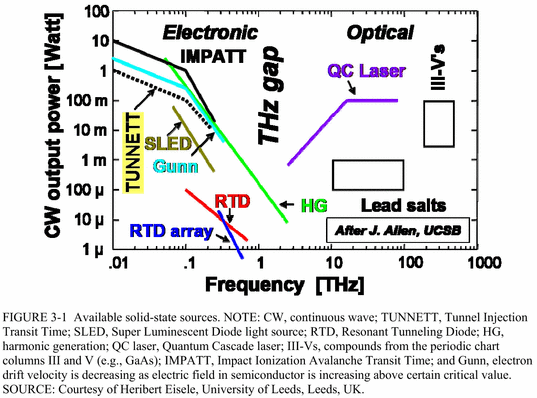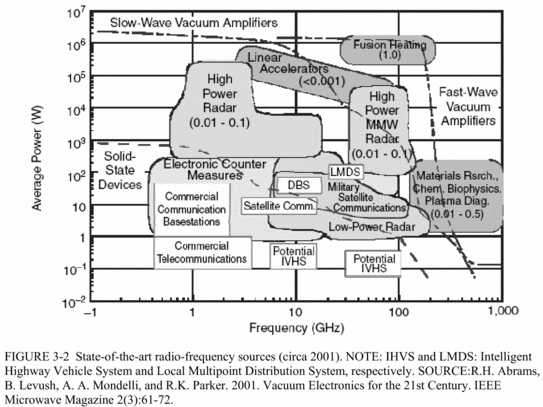While space science has long been excited about advancements in the millimeter-wavelength/terahertz spectra, its potential in biology has been largely untapped. However, since THz radiation primarily excites vibrational modes present in water, imaging of soft tissues could also show a lot of improvement.
Terahertz systems are currently used to do things like examine hidden layers under old artwork and stop terrorists by seeing through clothes but they could be used in bio-technology to find genetic mutations without using invasive or toxic fluorescent dyes.
An important step toward that is development of handheld terahertz devices that could replace the bulky, expensive systems available now. Researchers at the the Universities of Leeds and Harvard say a quantum cascade laser is the way to go for small and portable terahertz technology.

Terahertz quantum cascade lasers are created by building layers of compounds of aluminium, gallium and arsenic one atomic monolayer at a time, through a process known as molecular beam epitaxy. In molecular beam epitaxy, the chemicals evaporate from heated cells, and land on a heated, rotating, substrate. Minute changes in temperature, combined with a set of shutters that block the chemical beams, enable the team to adjust the amount of each chemical which is deposited on the substrate, gradually building up the layers they need.
To ensure the device works perfectly, there must be no pollutants, so the process is carried out under ultra-high vacuum conditions, approaching the vacuum levels found in outer space.
This type of laser only functioned at temperatures of minus 100°C but they have recently dropped the operating temperature by nearly 10 degrees.
“We hope to obtain further advances by optimising the methods we used to create the device,” explains Professor Edmund Linfield from the University of Leeds. “We have some radically new design ideas, and also believe that we can make significant improvements in the way we fabricate the lasers.”

FURTHER NOTES:
"Assessment of Millimeter-Wave and Terahertz Technology for Detection and Identification of Concealed Explosives and Weapons", Committee on Assessment of Security Technologies for Transportation, National Research Council, The National Academies Press, 2007, p.29





Comments